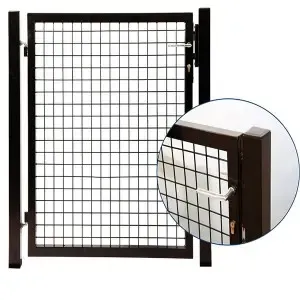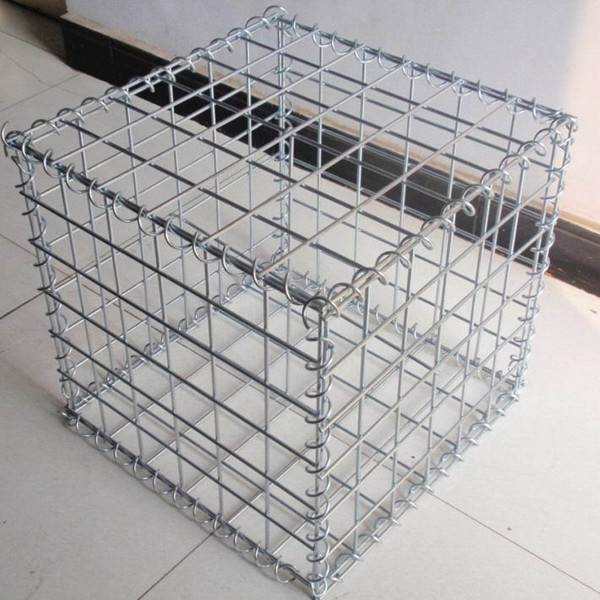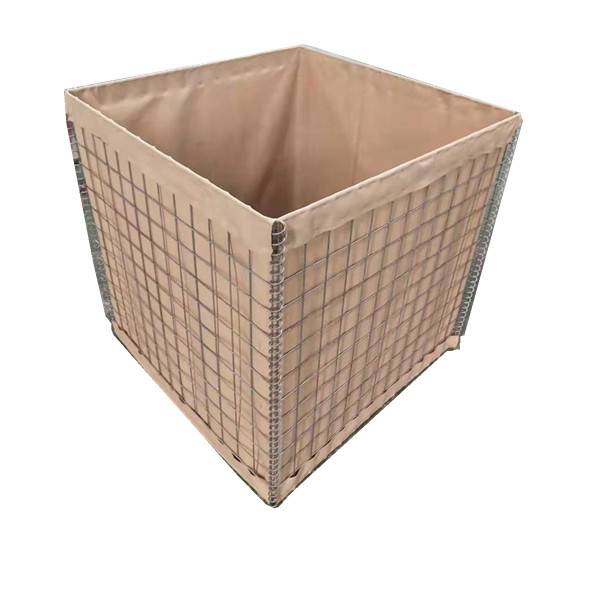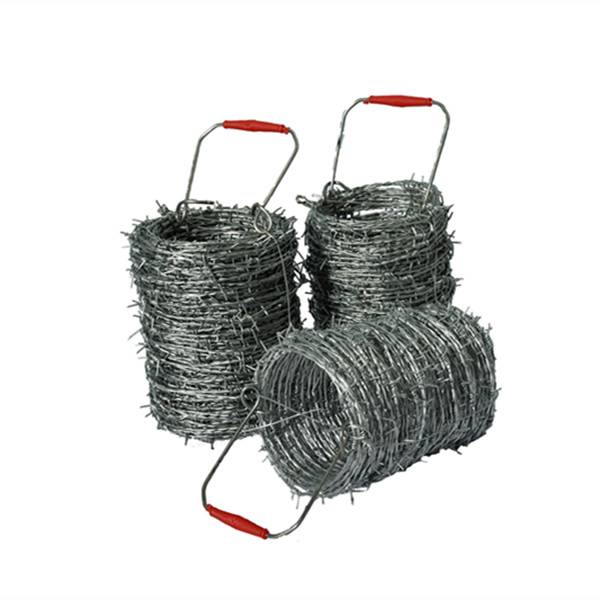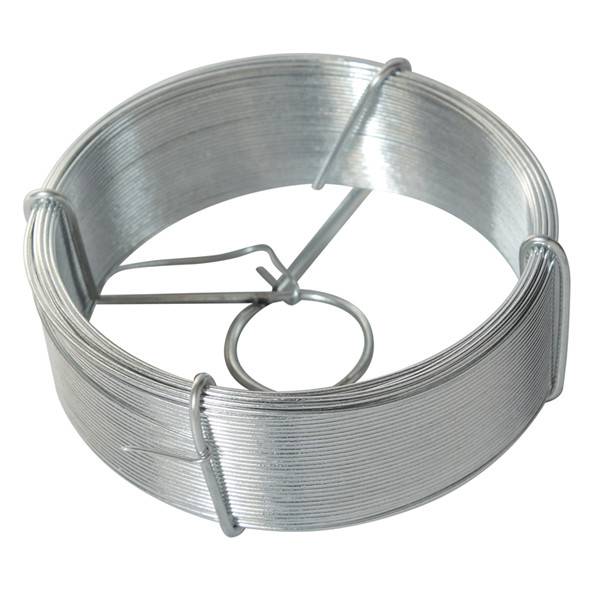
Nov . 15, 2025 02:00 Back to list
Welded Wire Fabric for Construction: Durable, Efficient Reinforcement Solutions
Understanding Welded Wire Fabric: Why It Still Matters Worldwide
In the vast world of construction materials, welded wire fabric quietly plays a starring role. Imagine a mesh of steel wires, expertly joined at intersections — that’s the trusty backbone supporting everything from roads and buildings to humanitarian shelters. This seemingly simple material packs a punch: improved strength, durability, and cost-effectiveness. Its global importance can't be overstated, especially as urbanization and infrastructure needs accelerate worldwide.
Mastering the ins and outs of welded wire fabric unlocks better design solutions, smarter budgeting, and sustainable construction practices.
Welded Wire Fabric in Global Context: More Than Just Steel Mesh
On a large scale, the construction industry absorbs roughly 13% of global GDP, according to the World Bank. Behind that impressive figure lies a hefty demand for reinforced concrete — and by extension, welded wire fabric (WWF). Whether constructing highways in rapidly urbanizing Asia or rebuilding after natural disasters in the Caribbean, this product is at the heart of modern development efforts.
Yet, here’s a challenge: the sector faces growing pressure to build faster, cheaper, and with less environmental strain. Traditional reinforcement methods can be slow and prone to errors. WWF offers a compelling solution by streamlining reinforcement processes while ensuring structural integrity. It’s no surprise that both large-scale infrastructure projects and humanitarian agencies lean into WWF more and more.
Defining Welded Wire Fabric: What Is It Exactly?
At its core, welded wire fabric is a grid of steel wires that are welded (not woven or tied) at their intersections. The pattern usually forms squares or rectangles, with wires oriented perpendicularly. These meshes come in different gauges and spacings but share a single mission: to reinforce concrete, providing tensile strength where concrete alone falls short.
Modern industry uses WWF not just for strength but to improve construction speed and reliability. In humanitarian contexts, like emergency housing for displaced populations, WWF’s versatility shines through — it forms the skeleton for quick-assembly shelters and foundations that combine speed with resilience.
Mini takeaway:
Welded wire fabric is much more than steel grids — it's the invisible scaffold that reinforces and speeds up construction worldwide.
Key Aspects That Make Welded Wire Fabric Indispensable
Durability
Steel wires used in WWF are often galvanized or coated to resist corrosion, dramatically extending lifespan even in harsh climates. This durability crucially reduces maintenance costs on bridges, pavements, and coastal structures.
Scalability
WWF sheets come in various sizes and wire gauges, fitting everything from small residential projects to expansive highway reinforcement. The modular nature means you can easily tailor quantities and grades without waste.
Cost Efficiency
Compared to tied rebar nets, welded wire fabric reduces labor hours, helping projects save on manpower without sacrificing quality. The material itself is affordable and readily available, contributing to lean budgets.
Installation Speed
The uniform grid permits rapid placement on site. It cuts down the complex tying process, speeding up schedules — a factor highly prized on tight deadlines or in disaster zones where time is literally life-saving.
Structural Integrity
Welded joints maintain consistent spacing and tension, which enhances load distribution and prevents weak points. Many engineers argue this reliability helps reduce cracking and structural failures.
Easy Handling & Transport
Lightweight rolls or panels roll up or stack neatly, simplifying logistics, especially in remote sites.
Mini takeaway:
Durability, cost savings, and ease of use combine to make welded wire fabric a practical, high-value solution.
Global Applications & Real-World Use Cases
In Southeast Asia and Latin America, infrastructure booms lean heavily on WWF to reinforce highways and urban flood defenses. I’ve noticed many projects by agencies like the Asian Development Bank specify welded wire fabric for foundations, thanks to its proven performance.
Post-disaster relief often requires rapid deployment of shelters and temporary community centers. NGOs use welded wire fabric to build frames for modular housing that balances speed, safety, and dignity for displaced persons.
In Europe and North America, WWF is standard in commercial and residential concrete slabs, parking garages, and even precast concrete panels – quite a versatile companion!
| Specification | Range / Value |
|---|---|
| Wire Diameter | 3 mm – 10 mm |
| Mesh Size | 50 mm x 50 mm to 200 mm x 200 mm |
| Sheet Size | 2 m x 6 m (typical) |
| Coating | Galvanized, Epoxy-coated, Black Steel |
| Tensile Strength | 500 – 700 MPa |
The Benefits and Long-Term Value of Using Welded Wire Fabric
Financially, WWF saves time and money thanks to speedier installation and less material waste. Sustainability-wise, longer lifespans and corrosion resistance reduce repair frequency — which means less resource consumption over decades.
Socially, using strong, reliable reinforcement fosters public safety and confidence. You feel it when walking on a solid sidewalk or crossing a sturdy bridge — that subtle sense of security is priceless.
Plus, designers get innovation freedom: welded wire fabric works with precast or cast-in-place concrete, steel, and composites, expanding possibilities.
Looking Ahead: Trends and Innovations
Advanced coatings like superhydrophobic layers are entering the scene to boost corrosion resistance even further. Automation in welding processes ensures consistent quality and custom mesh sizes to exacting specs. Green building codes increasingly recognize WWF’s role in sustainable infrastructure — especially when paired with recycled steel.
Oddly enough, digital tools now allow engineers to simulate strain and optimize mesh layouts before material arrives on site, reducing overuse. So we’re seeing welding getting smarter, not just stronger.
Common Challenges and How We're Solving Them
One stumbling block is transportation in very remote areas, where large sheets may struggle over rough terrain. Thankfully, modular rolls and broken-down kits help teams carry WWF in smaller bundles.
Another concern is weld quality inconsistencies leading to weak points — but enhanced automated inspection and industry standards are closing that gap fast.
Firms are experimenting with hybrid meshes combining fibers and steel, marrying flexibility with strength for specialized uses.
Vendor Comparison: Picking the Right Welded Wire Fabric Supplier
| Supplier | Product Range | Lead Time | Price Level | Certifications |
|---|---|---|---|---|
| SteelGrid Inc. | Standard & custom, galvanized, epoxy | 2 weeks | Mid-range | ISO 9001, ASTM A1064 |
| WireTech Solutions | Lightweight roll mesh, HD galvanized | 1 week | Premium | CE Mark, ISO 14001 |
| GlobalBuild Wire | Economy line, black steel, bulk orders | 3 weeks | Budget | ASTM A82 |
FAQ: Welded Wire Fabric Questions Answered
- What types of projects benefit most from using welded wire fabric?
- Welded wire fabric suits a broad variety of concrete reinforcement projects including slabs, roadways, retaining walls, and rapid-deployment shelters. Its ease of installation and structural reliability make it especially effective in large-scale, repetitive applications where uniformity is key.
- How long does welded wire fabric typically last in construction?
- With proper coatings such as galvanization and good concrete cover, welded wire fabric can last 50 years or more. Environmental factors like moisture and salt exposure influence longevity, but protective measures and maintenance greatly extend service life.
- Is welded wire fabric environmentally sustainable?
- Yes, especially when using recycled steel and durable coatings that minimize repairs and replacements. WWF supports sustainable infrastructure by reducing resource waste and improving building lifespan, aligning with green construction standards.
- Can welded wire fabric be customized to specific project needs?
- Absolutely. Suppliers can tailor wire gauge, mesh size, sheet dimensions, and coatings to suit unique structural or environmental requirements. Automation has made custom meshes more accessible, allowing precise engineering solutions.
- How can clients source welded wire fabric internationally for large projects?
- Most major suppliers offer global shipping, with lead times varying by region. Working with reputable vendors ensures compliance with international standards and smooth logistics. Bulk purchasing often unlocks better pricing and faster turnaround.
Wrapping Up: Why Welded Wire Fabric Continues to Shape Our Built World
It feels like through simple yet smart engineering, welded wire fabric quietly weaves strength and speed into countless projects worldwide. From sprawling highways to emergency shelters, its value spans financial, environmental, and human realms.
If you want to explore quality products and reliable suppliers, don’t hesitate to visit our website for more info and personalized support. Because at the end of the day, a strong foundation matters — literally and figuratively.
References
-
Custom Weld Mesh – Tailored Solutions for Durable Industrial Fencing & Construction
NewsNov.24,2025
-
Comprehensive Guide to Chicken Welded Wire Mesh: Uses, Benefits & Suppliers
NewsNov.23,2025
-
BRC Weld Mesh – Durable Reinforcement Solutions for Modern Construction
NewsNov.23,2025
-
Durable BRC 3315 Mesh for Reliable Concrete Reinforcement | Hardware In Store
NewsNov.23,2025
-
Discover the Benefits of Green Weld Mesh – Durable, Sustainable Fencing Solutions
NewsNov.22,2025
-
Electro Welded Mesh: Durable, Versatile Steel Grid Solutions | HardwareInStore
NewsNov.22,2025
Products categories





